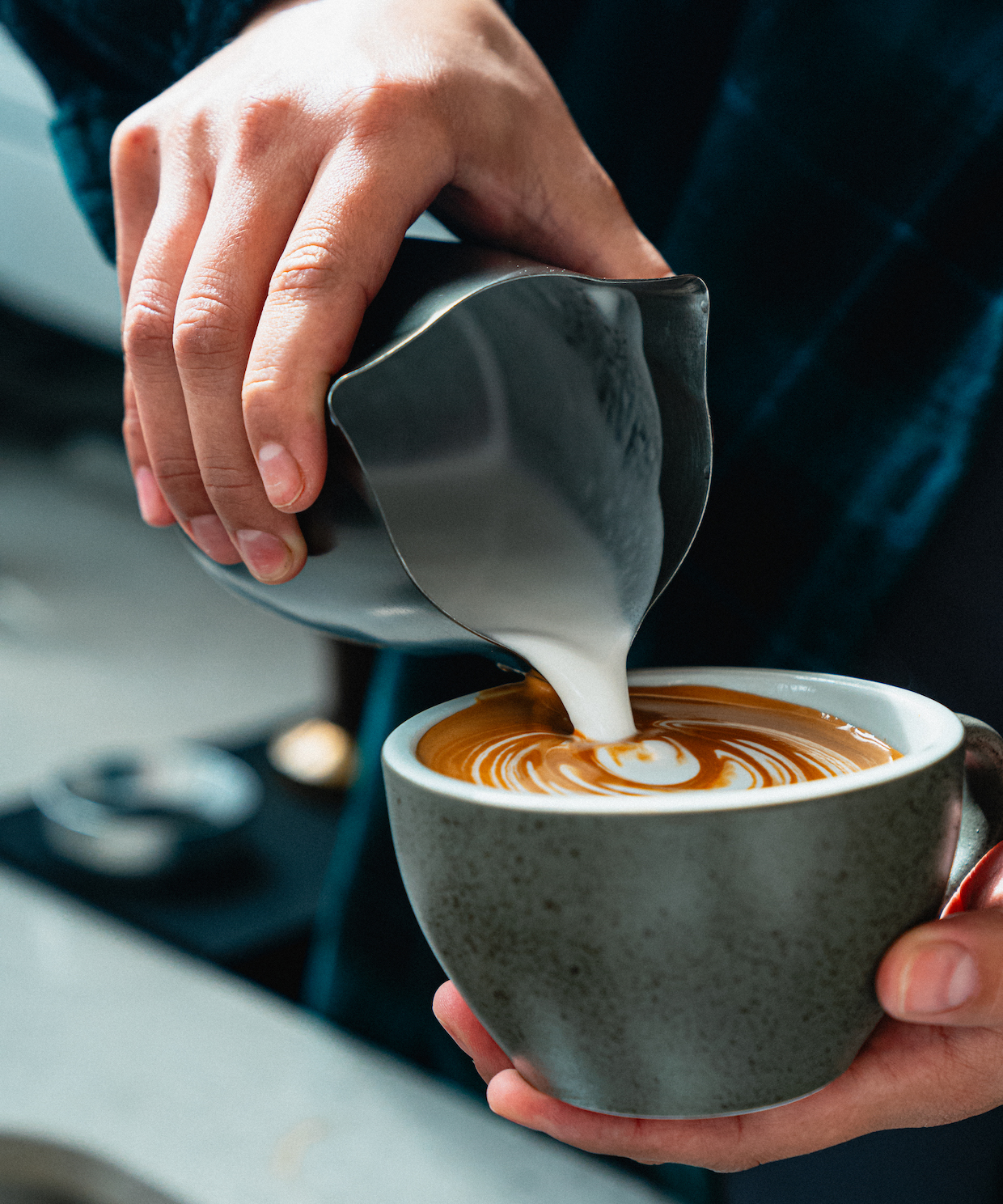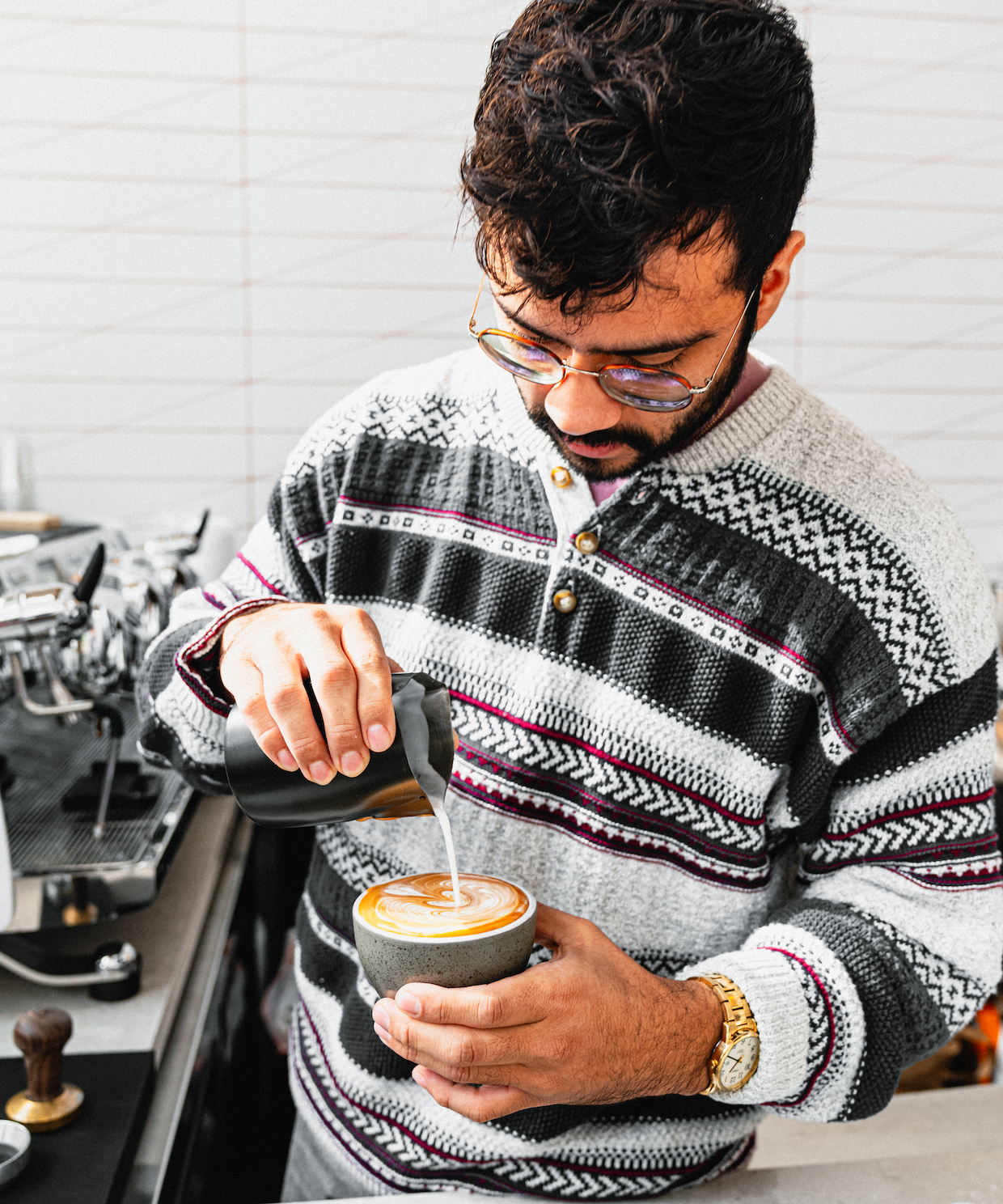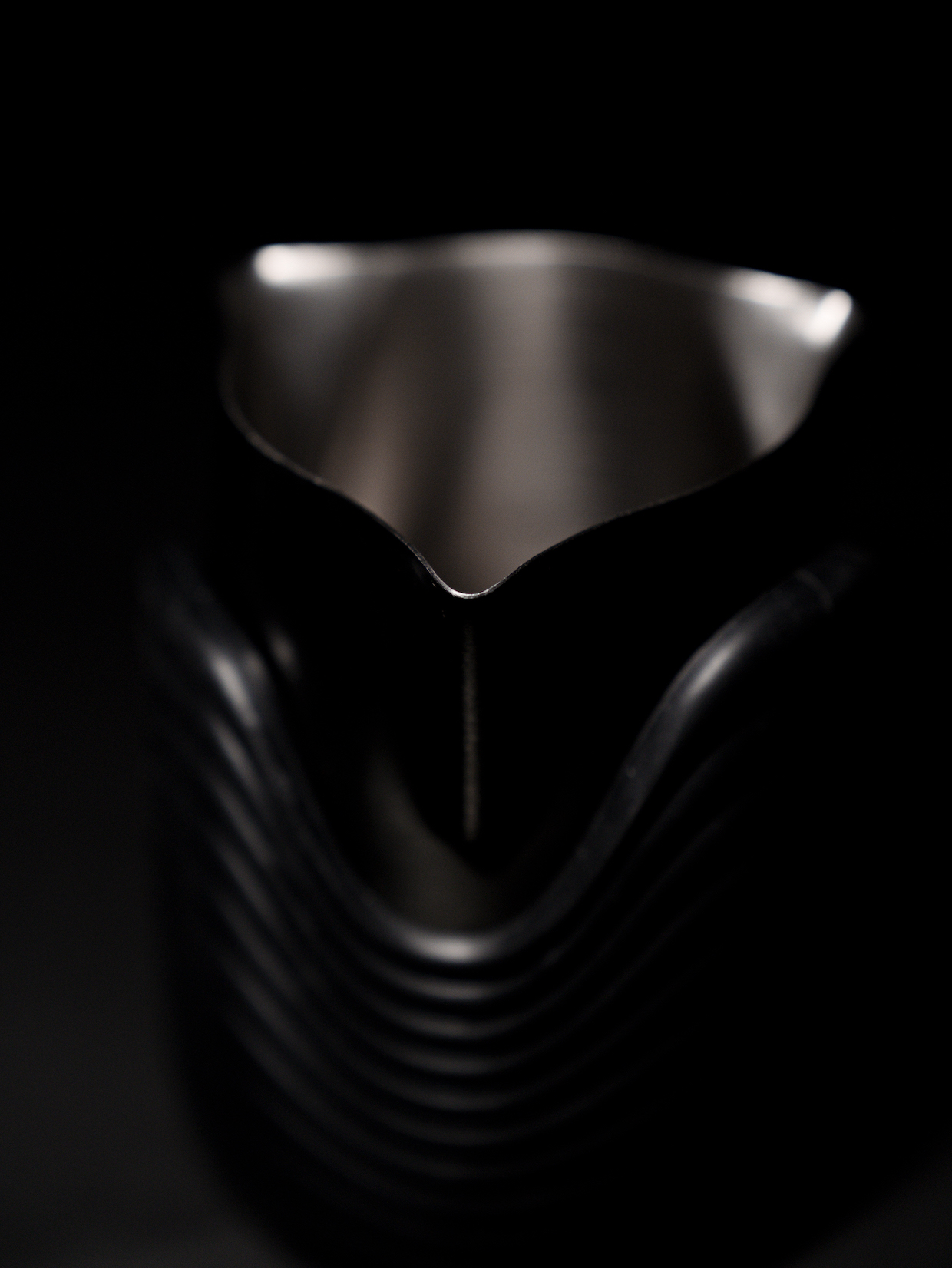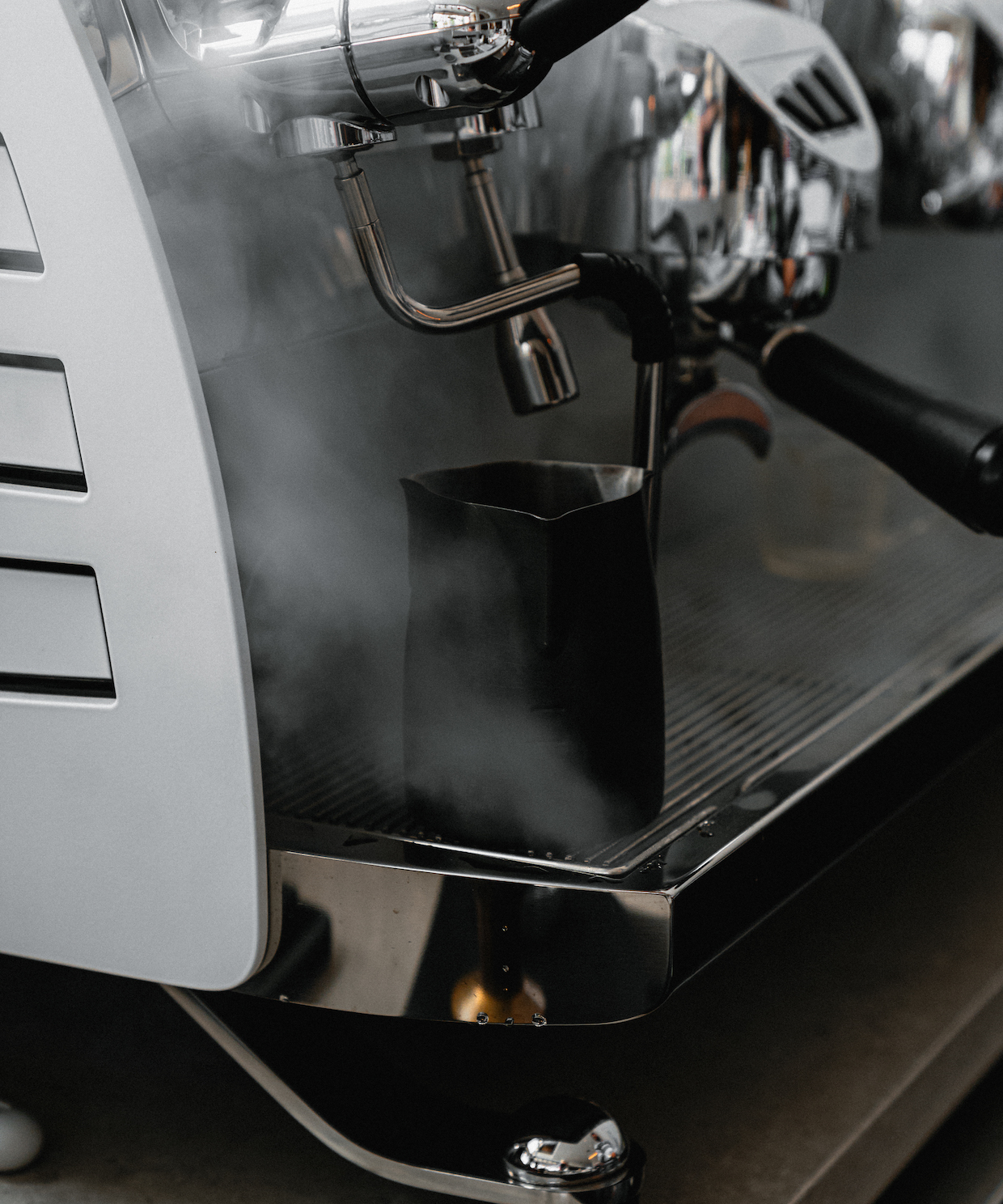Barista-focused coffee equipment seller Slow Pour Supply has unveiled its first original product, the Kimera tri-spout handleless latte art pitcher.
The company has also relocated all operations to a new, substantially larger facility in Magnolia, Texas, across the street from its previous location.
The Kimera
The 500-milliliter Kimera pitcher is made from stainless steel and is wrapped in a custom wavy-patterned sleeve made of soft matte silicone material for a comfortable grip. Slow Pour plans to launch pre-order for the black steel pitcher next month. Priced at $88, the initial units with ship with both a black sleeve and a “bubble gum pink” sleeve.
[Editor’s note: This story has been updated. The original version incorrectly stated that Slow Pour Supply was accepting pre-orders for the Kimera. Pre-orders are not available as of this writing (Feb. 19, 2024).]
The three-spouted pouring tool for baristas was designed through a collaboration between Hong Kong-based equipment maker WPM Welhome Pro and Slow Pour Supply Founder and CEO Anita Tam, who is also the competitions coordinator for the United States Coffee Championships.
Two of the three spouts built into the Kimera pitcher — the wide 06 and the narrower 07 — are familiar WPM spout designs. The third Kimera spout, called 08, is a unique and precision-oriented spout designed by Tam. The point, flare and taper of the 08 spout aim to support the “drag and draw” technique of milk art pouring while also providing versatility for more advanced users based on technique.
“A lot of people think only about the tip of [the] spout — is it narrow, sharp, pointy, almond shaped, round, wide,” Anita Tam told Daily Coffee News. “But the whole entire latte art spout, from the tip, the extension of the tip to the flare, all the way down to the neck — everything interacts in how it pours.”
For Tam, the Kimera represents a solution to a pitcher-related Catch-22 that has dogged her and her barista clientele since she founded Slow Pour Supply out of a single room in her home in 2017.
Tam has found baristas to be reluctant to adopt handleless pitchers, as they depend on handle-to-spout alignment for intuitive pouring, especially during busy or hectic times behind the bar or in competition.
Yet Tam suggests manufacturing inconsistencies often result in the handles that are slightly askew, and the very presence of the handle may require too much movement of the wrist.
“It should be a straight line from your elbow to the tip of the spout,” Tam said. “Your shoulder or elbow joint is more reliable than your wrist. You’re looking for some very consistent movement throughout this very fast process of a liquid exiting the pitcher into the cup through the crema, as well as the velocity of how fast this liquid exits. How stable you are to control the energy of this exit determines how good the latte art pattern is going to be.”
While the three spouts of the Kimera may provide slightly different results, they more importantly provide visual cues and ergonomic control for users seeking quick alignment when grabbing handle-free pitchers, according to Tam.
“The 08 style has a wider neck but a pointier tip that allows you to not only pour very fine lines, but if you choose a certain milk texture and if you go higher into the spout while you pour, it allows you to have a very different flow,” Tam said. “That spout by itself can dramatically change, within the core action, the length or the width of the pattern coming out, so you don’t actually have to switch spouts.”
The New Warehouse
After days of moving inventory by hand with forklifts and pallet jacks from one space to another, the Slow Pour Supply team is up and running in a larger warehouse that’s literally a stone’s throw from the previous one.
“We have a very small, but very powerful, almost all-women team working in logistics to events to fulfillment,” said Tam. “I think we have a pretty great team.”
With 50% more space for growth and events, the natural-light-filled 5,000-square-foot location is full of possibility. While there will be no retail sales on site, Tam said Slow Pour aims to hold its first public classes, workshops and other events since the pandemic by the Spring.
“There will be a new lab, and then we have some new ideas for how to open up the facilities from time to time, regularly, for people to enjoy in off hours,” said Tam. “I’ve got a background in music and music production. We have some ideas in mind of how to merge these two things together. So we’ll see how that goes.”
Comments? Questions? News to Share? Contact DCN’s editors here.
Howard Bryman
Howard Bryman is the associate editor of Daily Coffee News by Roast Magazine. He is based in Portland, Oregon.















Comment